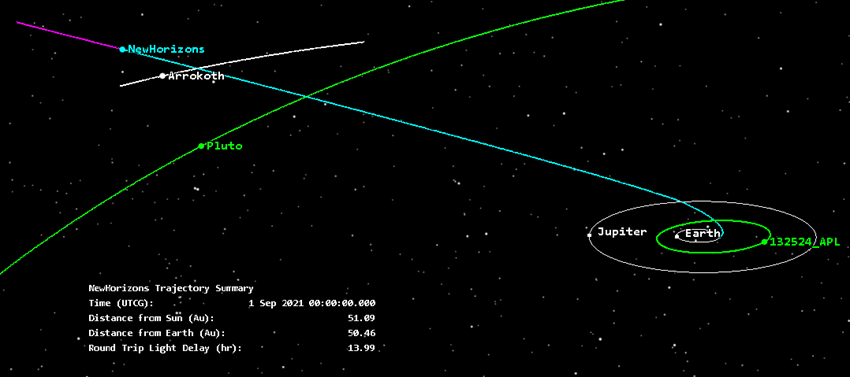Where Is New Horizons Now? Modeling Interstellar Spacecraft in STK
- Sep 29, 2021
- Blog Post
-
 Systems Tool Kit (STK)
Systems Tool Kit (STK)
To date, five human-made spacecraft are on trajectories out of our solar system. Launched in 2006 and designed and operated by the Johns Hopkins University Applied Physics Laboratory (APL), New Horizons is the newest of these spacecraft. Travelling at over 58,000 kilometers per hour, New Horizons made flybys of Pluto in 2015. NASA extended funding for the mission for a flyby of the contact binary asteroid, Arrokoth, in 2019, which became the most distant flyby in history.
Today, even at over 7.5 billion kilometers from Earth, New Horizons and its slew of scientific instruments are still going strong. And New Horizons is up for consideration to extend its mission at the end of this year. If the extension is approved, scientists at NASA and APL can evaluate the possibility of conducting flybys of other Kuiper Belt objects to learn more about the outer edges of our solar system.

New Horizons’ projected path for the next four years on its way out of the solar system
The sheer distance between Earth and New Horizons makes communication extremely difficult. Radio signals are transmitted by pointing the antennas of the NASA Deep Space Network precisely at New Horizons. These communications travel at the speed of light, but it still takes nearly 14 hours to make the round trip. This means that when operators send a command, they have to wait 14 hours to hear a response from the spacecraft. Thus, all commands to the spacecraft must be meticulously planned, and the antennas must be pointed perfectly. Luckily, STK can help!
From the very beginning, AGI has been a proud partner with JHU APL for critical mission planning and operations functions. With STK and STK’s Astrogator capability, you can model trajectories and maneuvers for the full spectrum of space missions incorporating custom engine models and pointing schemes. STK’s SatPro and Communications capabilities enable you to model specialized attitude control sequences to ensure that sensors and antennas are pointing in the right direction at the right time to collect valuable scientific information or listen for transmissions from Earth.
Want to model the New Horizons mission for yourself? NASA’s Jet Propulsion Laboratory makes the ephemeris of New Horizons and many other planetary satellites, comets, asteroids, spacecraft, and more, available to the public through the JPL HORIZONS system. STK has a custom reader plugin that loads these ephemerides into STK for analysis and visualization. Learn more about it here. What are you waiting for? The possibilities for modeling our solar system and beyond are infinite!

